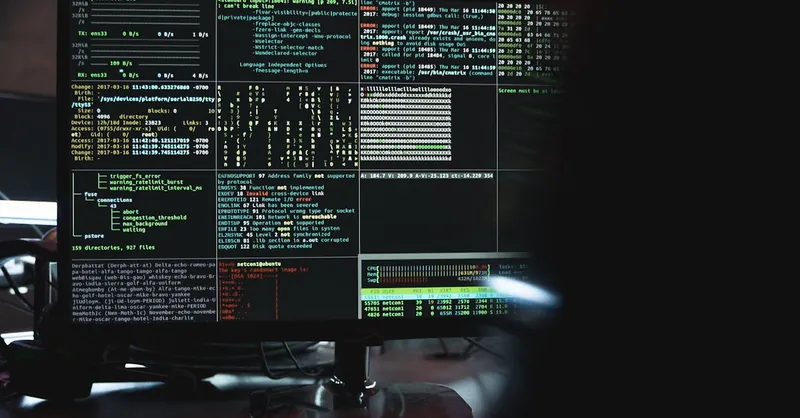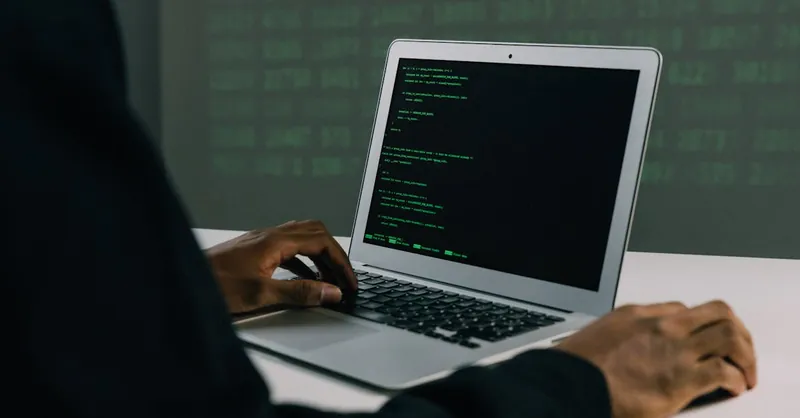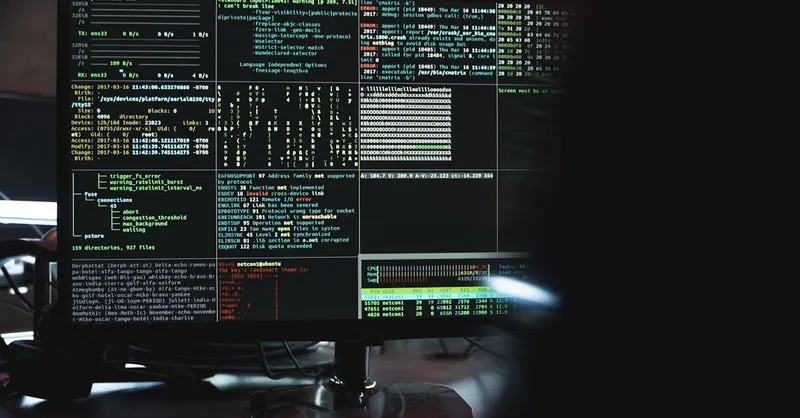Hacking WiFi Networks Legally: Ethical Guide for Beginners
Category: Ethical Hacking
Mastering Legal WiFi Hacking: Ethical Steps for Beginners
If you're diving into the world of ethical hacking, understanding how to hack WiFi networks legally is a crucial skill. Whether you're a beginner eager to learn foundational concepts or an aspiring ethical hacker looking for safe, responsible methods, this guide is tailor-made for you. You've found this post because you're interested in exploring network security without crossing ethical or legal lines—perhaps to strengthen your own networks or to skillfully test client systems. We know the challenge: navigating WiFi hacking techniques legally can be confusing due to the complex landscape of laws and technical barriers.
This article breaks down the legal frameworks and the practical steps you can take to hack WiFi networks ethically. Unlike many generic tutorials, we'll focus exclusively on methods that comply with legal standards, ensuring you build your skills responsibly. We'll also dive into foundational concepts, essential tools, and scripting techniques that empower you to enhance security without risking legal troubles. By reading on, you'll get a comprehensive roadmap—from understanding WiFi security protocols to executing penetration tests with permission—crafted to keep you on the right side of the law while expanding your hacking expertise.
Get ready to transform your curiosity into a powerful, ethical hacking skill set that helps protect networks rather than exploit them.
- Mastering Legal WiFi Hacking: Ethical Steps for Beginners
- Understanding Legal Frameworks Around WiFi Hacking
- Fundamentals of WiFi Security Protocols
- Necessary Permissions: How to Acquire Authorization for Ethical WiFi Hacking
- Tools for Legal WiFi Network Analysis and Testing
- Practical Tutorials for Legal WiFi Penetration Testing
- Creating Custom Scripts for WiFi Security Assessment
- Reporting and Mitigating Vulnerabilities Responsibly
- Common Mistakes to Avoid in Ethical WiFi Hacking
- Advanced Insights: Emerging WiFi Threats and Ethical Countermeasures
- Building a Career in Ethical WiFi Hacking
Understanding Legal Frameworks Around WiFi Hacking
Before you begin any WiFi penetration testing or ethical hacking activities, it's critical to understand the legal frameworks that govern network security testing in your jurisdiction. Laws regarding WiFi hacking vary widely across countries and even states, but the common principle underlying these regulations is clear: unauthorized access to networks is illegal and punishable by law. Engaging in WiFi hacking without explicit permission can lead to severe consequences, including criminal charges, fines, and reputational damage.
Key Legal Considerations for Ethical WiFi Hacking
-
Obtain Explicit Authorization
Always secure written consent from the network owner before performing any WiFi penetration tests. This is a non-negotiable first step to ensure your activities qualify as ethical hacking rather than illegal intrusion. -
Familiarize Yourself with Local Laws
Different countries enforce laws such as the Computer Fraud and Abuse Act (CFAA) in the United States, the Computer Misuse Act in the UK, and various regional cybersecurity regulations that prohibit unauthorized access. Research the specific legislation relevant to your area to ensure compliance. -
Scope and Limit Testing Activities
Clearly define the scope of your hacking efforts with your client or organization, limiting tests to authorized devices and networks. Overstepping this scope, even unintentionally, can constitute illegal activity. -
Respect Privacy and Data Protection Laws
When conducting penetration tests, be mindful of laws such as the General Data Protection Regulation (GDPR) in Europe, which governs personal data privacy. Avoid collecting unnecessary user data, and ensure secure handling of any sensitive information you encounter.
Understanding and adhering to these legal boundaries not only protects you as an ethical hacker but also reinforces trust with clients and stakeholders. Investing time in learning the applicable regulations will empower you to conduct WiFi penetration testing confidently, ethically, and legally.

Image courtesy of Antoni Shkraba Studio
Fundamentals of WiFi Security Protocols
A crucial step toward legal WiFi hacking is grasping the core security protocols that protect wireless networks. Understanding protocols like WEP, WPA, WPA2, and WPA3 gives ethical hackers the framework to identify vulnerabilities and assess risks responsibly without resorting to guesswork. Each protocol offers different levels of encryption and security mechanisms, influencing how penetration tests should be approached and which attacks are feasible or outdated.
Overview of WiFi Security Protocols
-
WEP (Wired Equivalent Privacy)
Introduced in the late 1990s, WEP was the first security protocol used to secure WiFi networks. However, it suffers from significant vulnerabilities due to weak encryption methods and predictable initialization vectors (IVs). WEP can be cracked quickly using widely available tools, making it largely obsolete today. Still, many legacy or poorly maintained networks might still use WEP, so understanding its weaknesses is essential for ethical hackers assessing older systems. -
WPA (WiFi Protected Access)
WPA was created as a stopgap improvement over WEP, incorporating the Temporal Key Integrity Protocol (TKIP) to enhance encryption. While more secure than WEP, WPA is not immune to attacks like the TKIP replay attack or TKIP chop-chop attack. Recognizing these flaws enables ethical hackers to pinpoint outdated configurations that need urgent upgrades. -
WPA2
WPA2 made significant strides by adopting AES (Advanced Encryption Standard), a much stronger encryption algorithm. It became the defacto standard for WiFi security for over a decade. However, vulnerabilities such as the KRACK (Key Reinstallation Attack) exposed weaknesses in WPA2’s handshake process. Ethical hackers trained in WPA2’s structure are well-equipped to conduct authorized tests simulating these attacks to verify network resilience. -
WPA3
The newest standard, WPA3, addresses many previous protocol flaws by implementing stronger encryption through Simultaneous Authentication of Equals (SAE) and mandatory 192-bit security modes for enterprise networks. WPA3 also offers forward secrecy to protect past sessions even if current keys are compromised. Ethical hackers should familiarize themselves with WPA3’s enhanced framework to stay current with modern WiFi security evaluations.
Why Understanding These Protocols Matters for Ethical Hackers
By mastering the fundamental differences and security mechanisms of these protocols, ethical hackers can:
- Accurately identify protocol versions in use on target networks, ensuring penetration tests target relevant vulnerabilities.
- Avoid brute forcing or attacking networks protected by robust protocols like WPA3 where attacks are impractical or legally questionable without explicit permission.
- Develop customized testing methodologies that align with network configurations and security postures, boosting efficiency and ethical standards.
- Provide detailed vulnerability assessments and actionable remediation advice, enhancing network defenses and client trust.
In essence, deep knowledge of WiFi security protocols is the foundation for conducting legal, effective, and ethical WiFi penetration testing. It empowers hackers not just to find weaknesses but to understand their origin and significance, driving responsible improvements in wireless security.

Image courtesy of Jakub Zerdzicki
Necessary Permissions: How to Acquire Authorization for Ethical WiFi Hacking
Before you begin any WiFi hacking activities—even for ethical purposes—obtaining explicit written consent from the network owner is absolutely essential. This authorization transforms your work from potentially illegal intrusion into a legitimate penetration test, protecting you legally and ethically. Without clear permission, even the most well-intentioned security tests can be considered unauthorized access, leading to serious legal consequences.
Steps to Secure Written Authorization
-
Identify the Network Owner or Authorized Representative
Reach out directly to the business owner, IT manager, or responsible party who has the legal authority to grant access to the network. If you are working with a client, ensure they understand the scope and purpose of your testing. -
Draft a Clear Authorization Agreement
Your written consent document should explicitly state: - The scope of the penetration test, including which devices, networks, and systems are in-bounds.
- The time frame during which testing is authorized.
- The types of tests you will perform (e.g., protocol analysis, password cracking simulations).
- Any limitations or exclusions to prevent overreach.
-
Liability clauses clarifying responsibilities and indemnifications.
-
Communicate Risks and Responsibilities
Transparency about potential risks—such as network disruptions or data exposure—is critical. Ensure all parties acknowledge these risks in the consent form, minimizing misunderstandings. -
Keep Documentation Secure and Accessible
Maintain copies of all signed permissions and correspondence. These records serve as proof of your ethical hacking authorization and are invaluable in case of disputes or legal inquiries.
Why Written Consent Matters
- Legal Protection: Written authorization distinguishes ethical hackers from malicious actors under laws like the CFAA, Computer Misuse Act, and others worldwide.
- Professionalism and Trust: It builds client confidence and sets clear expectations, fostering strong professional relationships.
- Scope Control: Defining boundaries helps prevent accidental testing of unauthorized resources, which could violate privacy and security policies.
In summary, never attempt to hack or test a WiFi network without documented permission. Acquiring and adhering to proper authorization protocols is the cornerstone of ethical hacking, ensuring your efforts contribute positively to cybersecurity without legal or ethical risks.

Image courtesy of Tima Miroshnichenko
Tools for Legal WiFi Network Analysis and Testing
When performing ethical WiFi hacking, using the right tools is essential to conduct thorough yet authorized security assessments. Many widely accepted, open-source tools allow beginners and professionals alike to analyze, monitor, and test wireless networks within legal boundaries. These tools provide deep insights into network vulnerabilities, traffic patterns, and encryption weaknesses, enabling you to perform effective penetration tests while respecting privacy and legal constraints.
Popular Open-Source Tools for Ethical WiFi Hacking
-
Aircrack-ng
Aircrack-ng is a powerful suite designed specifically for WiFi security auditing. It enables packet capture, injection, and the cracking of WEP and WPA-PSK keys under authorized conditions. Its modular architecture includes tools for monitoring, attacking, testing, and cracking wireless networks, making it a staple in many ethical hackers’ toolkits. Aircrack-ng supports legal penetration testing by helping identify weak encryption, improper key management, and vulnerable handshake implementations. -
Wireshark
Wireshark is a leading network protocol analyzer renowned for detailed packet inspection. Unlike attack-focused tools, Wireshark emphasizes passive network analysis by capturing and displaying data packets traversing WiFi networks. For ethical hackers, it assists in diagnosing network issues, understanding wireless traffic flows, and verifying proper encryption. Used legally, it allows penetration testers to collect vital traffic data without actively disrupting or injecting packets into the network. -
Kismet
Kismet is a robust wireless network detector, sniffer, and intrusion detection system. It excels at passively identifying wireless networks and devices without active probing, which aligns well with ethical hacking practices that avoid unauthorized disruption. Kismet supports multiple wireless interfaces and captures data needed to map network topology, detect hidden SSIDs, and monitor rogue devices. This tool is especially useful during reconnaissance phases of legal WiFi penetration testing.
Why These Tools Matter in Ethical WiFi Testing
- Open Source & Community Supported: These tools benefit from continuous updates and auditing by the security community, ensuring they remain effective and compliant with ethical standards.
- Focus on Passive & Active Testing: Combining passive tools like Wireshark and Kismet with active testing suites like Aircrack-ng allows thorough yet responsible security assessments.
- Widely Recognized for Professional Use: Their acceptance across legal and professional cybersecurity fields ensures you remain aligned with best practices and industry norms.
- Flexibility for Beginners and Experts: Easy-to-use interfaces and comprehensive documentation make these tools accessible to beginners, while advanced features cater to experienced ethical hackers.
When you employ tools such as Aircrack-ng, Wireshark, and Kismet in line with legal authorization and ethical guidelines, you significantly enhance your ability to identify WiFi network vulnerabilities responsibly. Leveraging these resources empowers you to execute professional-grade penetration tests that safeguard networks and build trust with network owners and clients alike.

Image courtesy of RealToughCandy.com
Practical Tutorials for Legal WiFi Penetration Testing
Embarking on legal WiFi penetration testing involves a series of systematic, permission-based steps designed to uncover vulnerabilities without breaching ethics or laws. This section provides a practical, step-by-step tutorial on how to conduct thorough and responsible penetration tests on wireless networks, emphasizing reconnaissance, vulnerability identification, and comprehensive reporting—all with explicit authorization.
Step 1: Reconnaissance and Information Gathering
Begin by mapping the target network’s footprint using passive and active reconnaissance techniques within your permitted scope:
- Identify available WiFi networks, including hidden SSIDs, signal strengths, encryption types, and connected clients, using tools like Kismet or Airodump-ng.
- Collect metadata and handshake packets for authorized networks without attempting unauthorized access or injection.
- Understand the network topology to pinpoint critical devices, access points, and possible weak spots.
Step 2: Vulnerability Identification
With reconnaissance data at hand, focus on detecting exploitable weaknesses based on the network’s protocol and configuration:
- Analyze captured handshakes to test the strength of WPA/WPA2 passphrases using tools like Aircrack-ng, always within the bounds of your authorization agreement.
- Evaluate WEP-secured networks for known vulnerabilities, such as weak IVs, which can be cracked with reduced effort under legal conditions.
- Check for outdated firmware and misconfigurations on routers and access points, as these often introduce security loopholes.
- Use Wireshark to inspect wireless traffic for unencrypted sensitive information and protocol weaknesses without disrupting the network.
Step 3: Reporting and Remediation Recommendations
Ethical hacking is incomplete without detailed, clear communication of findings to the network owner:
- Compile a comprehensive penetration test report outlining every vulnerability discovered, how it was identified, and the potential risks involved.
- Include step-by-step descriptions, screenshots, and log excerpts where appropriate to enhance clarity.
- Provide actionable remediation recommendations, such as updating to WPA3, changing default credentials, or segmenting the wireless network for better security posture.
- Highlight best practices for ongoing network security maintenance, reinforcing responsible WiFi management.
By following this structured, legally compliant approach to WiFi penetration testing, beginner ethical hackers gain practical experience while respecting legal boundaries. This not only sharpens your cybersecurity skills but also strengthens trust with clients or employers, establishing your reputation as a responsible security professional.

Image courtesy of Antoni Shkraba Studio
Creating Custom Scripts for WiFi Security Assessment
Automating WiFi security assessments through custom scripting is a powerful way to streamline your ethical hacking workflow while maintaining strict compliance with legal and ethical standards. Leveraging scripting languages such as Python and Bash allows you to efficiently perform repetitive tasks like network scanning, packet capture, and data analysis—all critical for thorough WiFi penetration testing with explicit permission.
Why Use Scripting in Legal WiFi Hacking?
Manual execution of WiFi testing tools can be time-consuming and prone to errors, especially during large or complex assessments. Scripting enables you to:
- Automate network reconnaissance by systematically scanning for available WiFi networks and identifying encryption types.
- Control packet capture sessions by initiating, pausing, and stopping data collection precisely when needed, minimizing unnecessary traffic and respecting privacy.
- Filter and analyze captured data to extract valuable information such as handshake packets or anomalous traffic patterns without exposing sensitive information.
- Generate structured reports presenting your findings in a consistent, professional manner that’s easily understood by clients or stakeholders.
Getting Started with Python and Bash for WiFi Assessments
-
Python for Data Handling and Automation
Python’s extensive libraries, such as Scapy for network packet manipulation and PyShark for packet analysis, make it ideal for customizing WiFi tasks. For example, you can write scripts that scan for WiFi networks, capture WPA2 handshakes, and automate dictionary attacks against captured handshakes—all within authorized limits. Python’s readability and strong community support aid beginners in rapidly developing effective security tools. -
Bash Scripting for Command-Line Workflow Automation
Bash scripts excel in orchestrating command-line tools like airmon-ng, airodump-ng, and aireplay-ng from the Aircrack-ng suite. By scripting these utilities, you can automate interface setup, monitor mode activation, targeted scanning, and packet injection tests. Bash scripts help enforce consistency in testing procedures and reduce manual input errors, enhancing both speed and accuracy.
Ethical Constraints When Using Scripts
While custom scripts boost efficiency, it is essential to:
- Avoid unauthorized scanning or packet injection on networks without explicit consent.
- Implement rate limiting and session controls within scripts to minimize network disruption.
- Exclude capturing or storing unnecessary personal data to comply with privacy regulations such as GDPR.
- Clearly log all automated actions for accountability and transparency during penetration tests.
By incorporating custom scripting into your ethical WiFi hacking toolkit, you elevate your penetration testing capabilities—making your assessments more thorough, repeatable, and aligned with legal standards. Whether you are a beginner scripting your first WiFi scan or an experienced ethical hacker automating complex workflows, Python and Bash offer versatile, accessible solutions that respect both security and privacy principles.

Image courtesy of Tima Miroshnichenko
Reporting and Mitigating Vulnerabilities Responsibly
After conducting a thorough and authorized WiFi penetration test, the critical next step is to document your findings professionally and advise on effective remediation. Responsible reporting not only highlights security gaps but also provides actionable insights, empowering network owners to strengthen their WiFi security and reduce the risk of future breaches. Ethical hackers must prioritize clarity, accuracy, and confidentiality to uphold trust and maximize the positive impact of their assessments.
How to Document Findings Professionally
- Create a Clear and Structured Report
Your report should begin with an executive summary outlining the scope, testing methods, and overall security posture. Follow this with detailed sections that cover each identified vulnerability, including: - Description of the vulnerability (e.g., weak WPA2 passphrase found, outdated firmware detected)
- Steps and tools used to discover the issue
- Potential impact and risks if the vulnerability is exploited
-
Evidence such as screenshots, logs, or captured handshake data, presented securely and anonymized if necessary.
-
Use Non-Technical Language Where Appropriate
Since reports often reach non-technical stakeholders, balance technical details with straightforward explanations. Clear communication fosters better understanding and faster remediation decisions. -
Prioritize Vulnerabilities by Severity
Categorize findings into risk levels such as critical, high, medium, or low. This prioritization guides network owners on which issues require immediate attention versus those suitable for long-term improvements.
Advising on Remediation Responsibly
-
Provide Practical and Feasible Recommendations
Suggest specific actions aligned with best security practices, such as upgrading to WPA3, changing default passwords, enabling stronger authentication methods, or patching outdated router firmware. -
Promote Ongoing Security Hygiene
Encourage regular vulnerability assessments, network segmentation, secure configuration reviews, and education of users on phishing or social engineering risks. -
Respect Privacy and Data Sensitivity
Be cautious when reporting findings that involve user data or personal information. Ensure sensitive information is handled according to privacy laws like GDPR and highlight any regulatory considerations related to the vulnerabilities.
By meticulously documenting results and responsibly advising on remediation, ethical hackers contribute significantly to improving WiFi network security. This ethical approach not only exemplifies professionalism but also establishes you as a trusted cybersecurity partner dedicated to protecting digital environments within legal boundaries.

Image courtesy of Sora Shimazaki
Common Mistakes to Avoid in Ethical WiFi Hacking
When engaging in ethical WiFi hacking, especially as a beginner, avoiding common pitfalls is essential to maintain legal compliance, protect privacy, and uphold professional integrity. Many novice hackers unknowingly cross ethical or legal boundaries that can result in serious consequences. By recognizing and steering clear of these mistakes, you bolster your reputation as a responsible cybersecurity practitioner and ensure your penetration tests are both effective and lawful.
1. Attempting Unauthorized Access
One of the gravest errors in ethical WiFi hacking is conducting any form of network testing without explicit, written permission from the network owner. Unauthorized access—even if intended for security research—violates laws such as the CFAA and the Computer Misuse Act, exposing you to criminal prosecution. Always secure clear authorizations and strictly adhere to the defined scope to avoid legal repercussions.
2. Misusing Captured Data
During penetration tests, it’s common to come across sensitive information like captured handshakes, network packets, or user data. Improper handling or misuse of this data—such as attempting to decrypt personal information, sharing it without consent, or storing it insecurely—can breach privacy laws including GDPR. Ethical hackers must ensure all data collected is secured, minimized to what is necessary, and never exploited beyond the agreed testing purposes.
3. Ignoring Local and International Legal Requirements
Different jurisdictions have varying laws governing cybersecurity activities. Neglecting to research and comply with local legal frameworks can inadvertently transform ethical testing into illegal activity. Understanding applicable regulations, from data protection acts to computer misuse statutes, is indispensable. Additionally, certain countries require reporting vulnerabilities to specific authorities—ignoring these can result in legal or ethical violations.
4. Overstepping the Authorized Scope
Exceeding the agreed-upon boundaries during testing, such as scanning unapproved devices or networks, can lead to unintended disruptions and legal trouble. Maintaining strict discipline in following the authorized scope and timeline establishes trust and prevents accidental violations.
Best Practices to Avoid Common Pitfalls
- Always Obtain and Document Written Consent before beginning any WiFi penetration test.
- Limit Data Collection strictly to what is necessary for vulnerability assessment and ensure encrypted storage of all sensitive material.
- Stay Updated on Laws and Regulations related to cybersecurity and privacy in your operational area and beyond.
- Communicate Transparently with clients about testing procedures, risks, and limitations.
- Use Reputable Tools and Methodologies that align with ethical hacking frameworks and avoid overly intrusive techniques.
By internalizing these common mistakes to avoid and adhering to best practices, beginners can confidently build expertise in legal WiFi hacking without compromising ethics or legality. This proactive approach not only prevents trouble but also enhances the effectiveness and credibility of your ethical hacking endeavors.

Image courtesy of Matias Mango
Advanced Insights: Emerging WiFi Threats and Ethical Countermeasures
As WiFi technology evolves, so do the threats targeting wireless networks. Staying ahead of these emerging vulnerabilities is vital for ethical hackers aiming to protect networks legally and effectively. A recent and notable example is the KRACK (Key Reinstallation Attack), which exposed critical weaknesses in the WPA2 handshake process. KRACK allows attackers to manipulate the cryptographic handshake by reinstalling already-in-use keys, enabling potential decryption, packet replay, and data injection without needing the original WiFi password. Although patches and updates have mitigated this threat, it underscores how even widely trusted protocols can harbor hidden vulnerabilities.
Preparing for Contemporary Threats in Ethical WiFi Hacking
Ethical hackers must proactively adapt their penetration testing methodologies to include emerging exploit techniques like KRACK and others targeting WiFi networks. Key strategies include:
-
Regularly Updating Knowledge and Tools
Keep abreast of the latest security advisories, patches, and vulnerability disclosures for WiFi standards such as WPA2 and WPA3. Tools like Aircrack-ng and Wireshark frequently receive updates that enhance detection of new attack vectors—use these updated tools during authorized penetration tests. -
Simulating Attacks Like KRACK Responsibly
With explicit permission, replicate KRACK-style attacks within lab or client environments to evaluate if their networks are susceptible due to outdated firmware or improperly implemented WiFi protocols. Such simulations help validate whether patches are correctly applied and if network configurations enforce strong cryptographic controls. -
Emphasizing WPA3 Adoption and Configuration Testing
WPA3 introduces enhanced protections against handshake vulnerabilities by employing SAE (Simultaneous Authentication of Equals) and forward secrecy. Ethical hackers should incorporate assessments verifying WPA3 deployment and check for fallback mechanisms that might inadvertently expose networks to legacy WPA2 vulnerabilities. -
Testing for Device and Firmware Vulnerabilities
Many WiFi attacks exploit flaws in routers’ firmware or in connected IoT devices. Conduct authorized scans and vulnerability assessments on access points and associated clients to ensure that firmware updates are current and security best practices, such as disabling WPS, are enforced.
By integrating these advanced insights into emerging WiFi threats, ethical hackers not only strengthen their testing repertoire but also deliver valuable, forward-looking security recommendations. This approach solidifies your role as a cybersecurity professional committed to protecting wireless networks against both current and evolving risks within fully authorized and legal frameworks.

Image courtesy of Tima Miroshnichenko
Building a Career in Ethical WiFi Hacking
Stepping into the professional world of ethical WiFi hacking requires more than technical skills—it demands recognized certifications, active community engagement, and a commitment to continuous learning. As cyber threats evolve, aspiring ethical hackers must build a strong foundation that blends practical expertise with professional credibility to pursue rewarding careers in cybersecurity and wireless network defense.
Essential Certifications to Boost Your Ethical Hacking Career
Obtaining industry-respected certifications validates your knowledge and enhances employability. For WiFi security specialists, the following certifications are highly recommended:
-
Certified Ethical Hacker (CEH)
This globally recognized certification covers broad aspects of ethical hacking, including wireless network vulnerabilities, penetration testing methodologies, and lawful hacking principles. -
Offensive Security Certified Professional (OSCP)
Known for its hands-on, practical exam structure, OSCP demonstrates your ability to perform real-world penetration tests, including WiFi attack and defense scenarios under controlled environments. -
CompTIA Security+ and Network+
These certifications establish a solid baseline in network security and administration, crucial for understanding WiFi architectures and securing wireless environments effectively. -
Certified Wireless Security Professional (CWSP)
Tailored specifically for wireless security, CWSP delves deeply into WiFi protocols, encryption standards, intrusion detection, and wireless security policy frameworks.
Engaging with the Ethical Hacking Community
Community involvement accelerates growth by exposing you to the latest trends, tools, and ethical hacking challenges:
-
Participate in Forums and Online Communities
Platforms such as Reddit’s r/netsec, Ethical Hacker Network, and specialized Discord groups provide invaluable discussions, mentorship, and resource sharing. -
Attend Conferences and Workshops
Cybersecurity events like DEF CON WiFi Village, Black Hat, and local meetups offer networking opportunities and hands-on workshops in ethical WiFi hacking techniques. -
Contribute to Open Source Projects and Bug Bounties
Engaging in open-source tool development or responsibly disclosing vulnerabilities via bug bounty programs hones your skills and builds a credible professional portfolio.
Continuous Learning Pathways for Ethical Hackers
The cybersecurity landscape is dynamic, making lifelong learning essential:
-
Stay Updated on Latest WiFi Security Developments
Follow authoritative blogs, security advisories, and research papers to understand emerging vulnerabilities, patched threats, and novel defense strategies. -
Practice Regular Lab Exercises
Use virtual labs and controlled environments like Hack The Box or CyberSecLabs to refine your WiFi penetration testing and incident response skills. -
Expand Knowledge Into Adjacent Fields
Broaden expertise in areas such as network forensics, cryptography, and cloud security to provide holistic security solutions beyond WiFi networks.
By focusing on these career-building pillars—certifications, community engagement, and continuous learning—aspiring ethical hackers position themselves as valuable assets to organizations aiming to safeguard their wireless infrastructures. This strategic approach cultivates not only advanced technical capabilities but also the ethical mindset and professionalism necessary for long-term success in the field of legal WiFi hacking.

Image courtesy of Antoni Shkraba Studio
